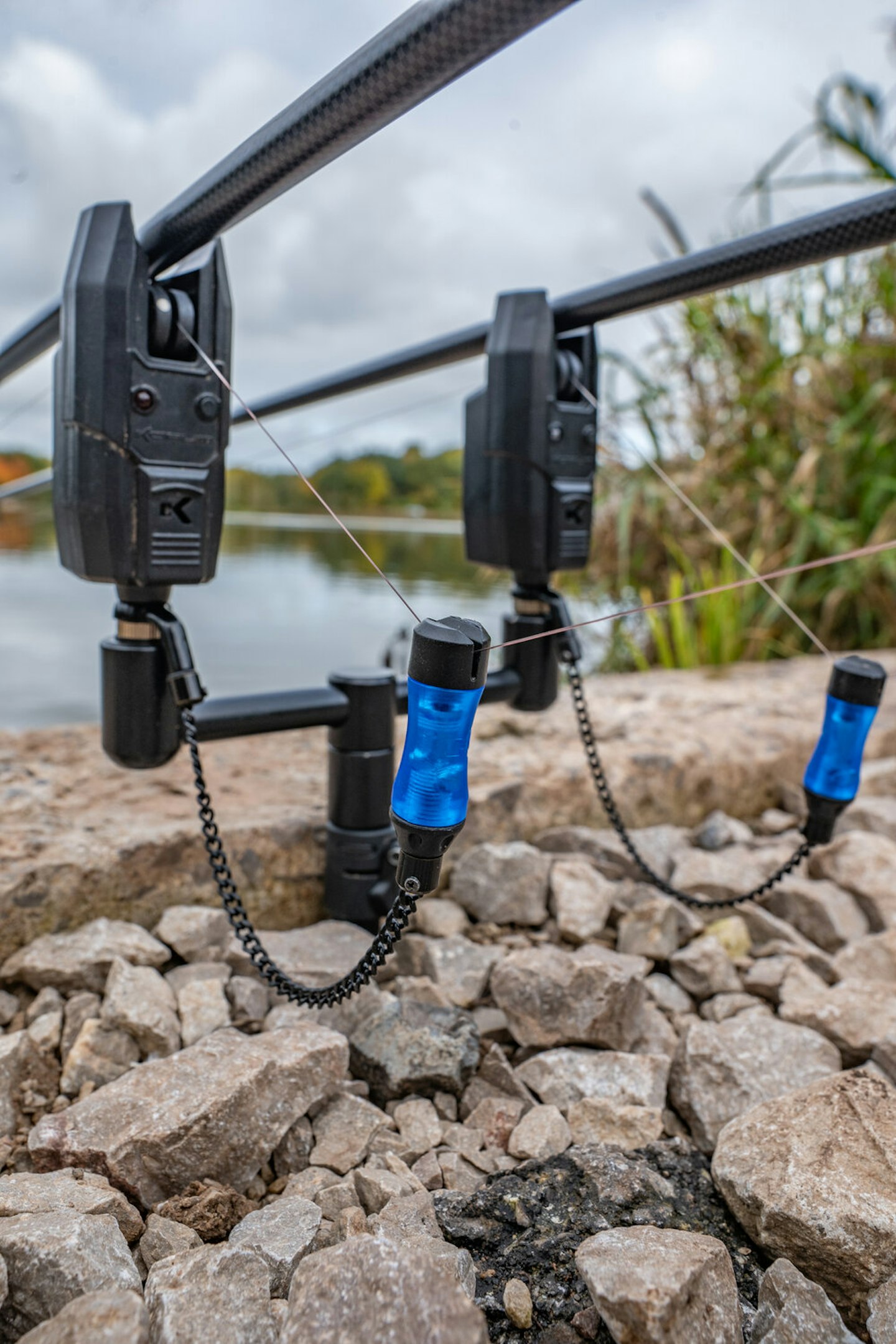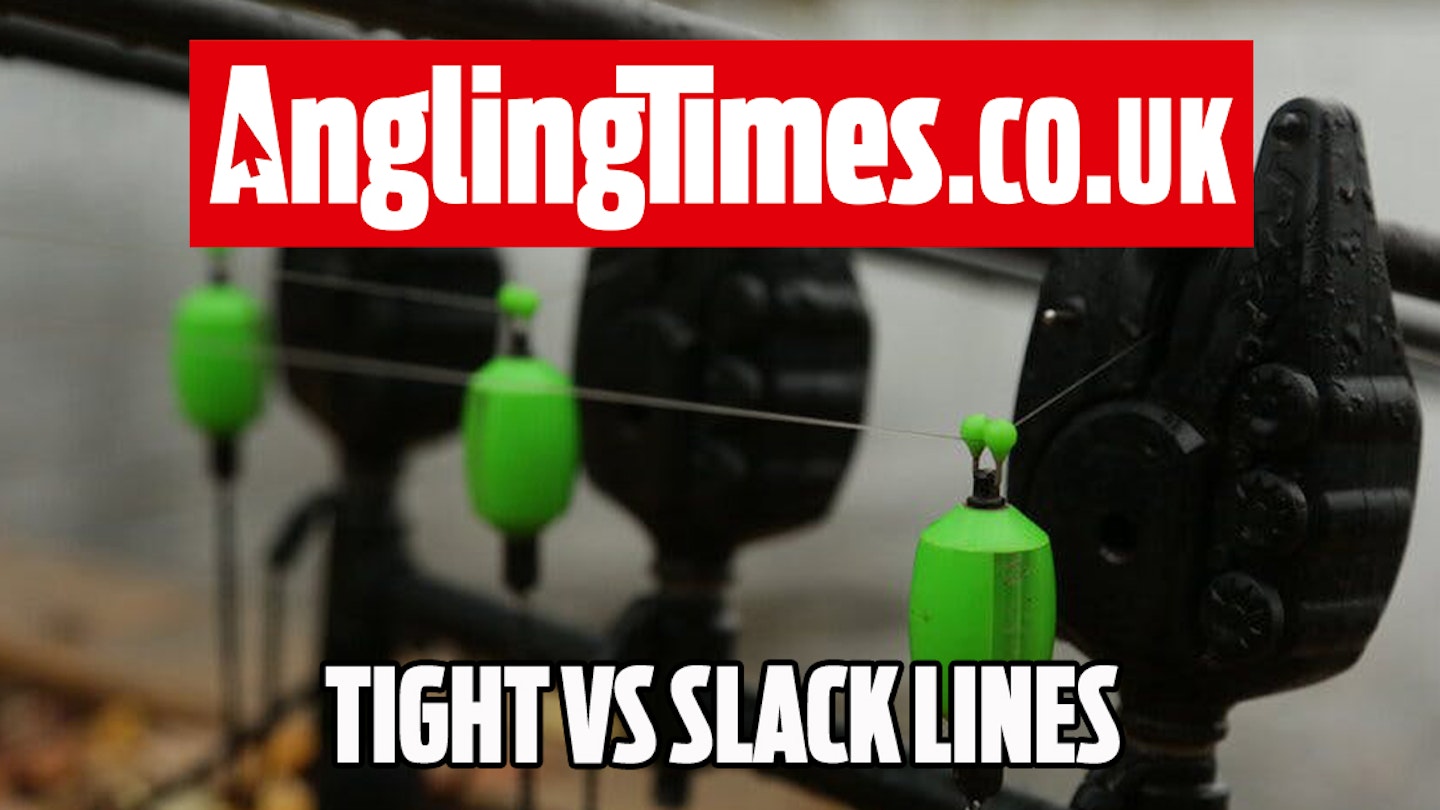Reliable bite indication is vital to getting more carp on the bank.
There are three main set-ups you should use, each of which offers various pros and cons. Here’s how to decide which method is best for you…
HAVING THE BEST BITE ALARM IS VITAL TO INDICATION. NEED SOME HELP? CHECK OUT OUR GUIDE.
SLACK LINES
Slack lines are mainly used when fishing at ranges of up to about 50 yards, dependent on what’s leading up to the spot you’re fishing.
If you’re fishing at 45 yards but over the top of a patch of heavy weed, there’d be no point slackening off your lines. This is why it’s really important to have an understanding of what is in between you and the area you’re landing your rig on.
For close-in work, slack lines are the ultimate. Fish are more on edge when they’re near to the bank and are more likely to spook if they encounter a tight line cutting through the water.
A slack line that’s been allowed to sink properly is far less visible to the fish, which will hopefully lower their guard enough to make them catchable!
To set the bobbin once your rig is in place, leave the rod on the rest for at least five minutes, continually paying off line until it hangs limply from the tip of the rod. At this point, clip on the bobbin and you’ll see that it hangs almost straight down. This does mean that if a carp swims towards you, indication is very limited as the bobbin can’t register a drop-back as it can on a semi-tight line. This is a rarity when margin fishing, though. Most bites are full-blooded runs with the carp swimming away from you at a rate of knots.

TIGHT LINES
When fishing to snags such as lily pads, visible tree roots, branches, weedbeds or any other obstruction, fishing your line bowstring-taut is recommended. This means that it’s tightened straight down to the lead and the bobbin set with no drop beneath the rod blank. As soon as the fish picks up the hookbait and moves the lead you will know about it.
When fishing like this, the clutch on your reel must be wound up tight so that no line can be taken from it. If the carp’s able to gain sanctuary in snags, you’re unlikely to land it. You also risk being cut off, which means the fish could be trailing all your end tackle.
You need to have a secure rod set-up with a rear butt grip that locks the rod in place, and your rod should be pointing straight at the snag for quick indication. The best way to achieve this is to use single bank sticks rather than a pod or buzz bars.
You mustn’t leave your swim for even a second. If you’re not on your rods the carp could be snagged and may even pull your rod off the rests.
A tight line is also a reliable choice for long-range fishing, as it gives the best bite indication. At ranges in excess of 80-100 yards, even with tight lines, the line nearest the hookbait will still be lying across the bottom, not spooking any carp.
A TIGHT LINE IS THE BEST OPTION ON WEEDY WATERS, LEARN MORE ON HOW TO FISH IN WEED HERE.

SEMI-TIGHT LINES
The most common way of having your lines set is to fish semi-tight, and this can be utilised in most situations.
This method is set up by allowing your line to sink and settle before paying off a few feet. The bobbin is clipped in place and suspended with a 3ins drop from the top of the bobbin to the bottom of the rod.
This means the line will be lying tight to the lakebed in the area surrounding the hookbait. Of course, this again depends on the topography of the lake, so knowing the features in your swim is important.
With this set-up you can see an indication on your bobbin and alarm whichever way the carp swims, something that isn’t possible with slack lines. If a carp swims towards you you’ll get a drop-back and the bobbin will fall towards the ground as opposed to climbing.
Bear this in mind when picking the rod up, as the carp will be swimming towards you, so you’ll have to wind in some slack line before striking.
PRACTICE THESE METHODS ON A CARP WATER NEAR YOU. CHECK OUT OUR GUIDE FOR THE BEST SPOTS.

This page is a free example of the amazing content Angling Times Members get every single week. Becoming an Angling Times Member gives you access to award-winning magazine content, member rewards, our back issue archives, bonus content and more! Join our fishing community and find out more today!
